Le MI Hind 24(la libellule de la mort)
MAJ 06/2017
UPDATE 06/2017
English Translation
|
|
Michäel Leontyevich Mil
1909 1970 |
Cet hélicoptère super puissant est né dans le bureau d'études de Michael Leontyevich Mil début des années 60. Il est entré en service dans les années 70. Lors de son entrée en service cet hélicoptère tranche nettement avec les techniques d'emploi des d'hélicoptères occidentaux.
En effet pour les occidentaux un hélicoptère n'est qu'un engin de transport ou de sauvetage. Or pour les soviétiques l'hélicoptère est un véritable Char d‘assaut ainsi qu'un VTT volant. L'hélicoptère doit transporter des troupes en toute sécurité au-dessus du territoire ennemi, occuper le terrain et s'en prendre aux forces qui l’attaquent.
Le MI 24 fut donc construit dans cette optique. Le cahier des charges prévoit un appareil doté d'une charge offensive importante et pouvant transporter en territoire ennemi une escouade de huit soldats armés
Il doit aussi être capable de lutter contre les chars, les avions ennemis et fournir une escorte aux hélicoptères de transport. Si cet hélicoptère a été extrapolé à partir du MI 8 ,il est toutefois un hélicoptère nouveau car il ne possède presque aucun élément commun avec son prédécesseur
Historique
L’idée de construire un hélicoptère de ce type prit corps au milieu des années 60 .12 prototypes furent construits . Le premier vol de l engin eu lieu le 19 septembre 1969. Les Occidentaux eurent vent de la présence de ce nouvel engin en 1972 mais les premières photos furent publiées en 1974 lorsqu’un hélicoptère est photographié en Allemagne de l’Est. .Il fut aussitôt baptisé Hind alors qu'il était connu chez les soviétiques sur le nom de A10
La motorisation étant assurée par 2 turbomoteursTV3s. Le fuselage est d'une conception totalement nouvelle. A l'avant se trouve un poste de pilotage en tandem qui peut accueillir 4 personnes pilote et copilote à l'arrière navigateur et observateur à l'avant.
La partie arrière du fuselage est occupée par une cabine qui possède une vaste porte d'accès qui s'ouvre en deux vers le haut et vers le bas
Pour la petite histoire cet hélicoptère avec un équipage féminin battit le record de vitesse mondial atteignant la vitesse de 368 .4 km/h. Bien que plus lourd qu’un Sea King il a une mobilité digne d'un chasseur.
En 1977 une nouvelle version apparue avec une modification importante du nez de l'appareil. C’est la version que nous connaissons actuellement. Cette modification entraîne une nouvelle disposition des membres d'équipage.
En effet le poste de pilotage ne permet d'accueillir que deux personnes le pilote à l'arrière et l'opérateur à l'avant. Le fuselage possède désormais une porte coulissante. Le MI 24 possède sous le poste de pilotage, d’une tourelle possédant une mitrailleuse quadruple de 12.7. La silhouette du MI Hind 24 est désormais figée Seules des modifications mineures seront apportées désormais.
Il fut utilisé opérationnellement au Tchad Sri Lanka Angola Afghanistan Tchétchénie , Irak Iran Il a eu même le privilège d’abattre une Phantom II avec un missile AT 6 Spiral
Diverses versions de cet hélicoptère ont vu le jour
M124 (Izdelei 240 Hind B)
Prototype et hélicoptères de pré série a été utilisé pour battre des records de vitesse et un exemplaire fut utilisé pour tester un rotor arrière type fenestron
Le pilote et le copilote sont assis en tandem
Mi24 A (Izdelie 245 Hind A)
Similaire au Prototype armé d ‘un canon Afanasyev A12.7 (TKB481) ; La porte du pilote est remplacée par une porte coulissante Il peut tirer des missiles Anti-char AT2 Swatter (9M17M) à guidage manuel 244 M Hind C)
Hélicoptère école non armé
Mi 24 F (Izdelie 245 M Hind A)
Test pour des nouveaux équipements
Nombre d’engins construits 240 La production prit fin en 1974
Mi24B (Izdelie 241 Hind A)
Hélicoptère testant une nouvelle panoplie d’armement testant la nouvelle mitrailleuse Yakoushev/Borzov (YakB TKB-063 ou 9A6624)
Mi24 D(Izdelie 246 Hind D)
Modèle intérimaire entre le modèle Mi 24 B et Mi 24 V produit en 1971 et ensuite construit à 350 exemplaire à l’usine de Rostov et Arsenyev . Il est motorisé par des moteur TV3-117 mais la modification majeure intervient à l’avant avec un cockpit redessiné il est armé avec des missiles Falanga P
Mi 24DU (Izdelie 249)
Version d’entraînement non armée
Mi24 PTR
Version développée pour le missile Shturm V
Mi24V (Izdelie 242 Hind E)
Version classique du Hind ll est motorisé avec les moteurs TV3-117V du Mi24 D modifiés et plus puissants Son armement est composé de 8 missiles antichar AT6 Spiral (9M114) radio guidés.Entre Mars 1976 et la fin 1981 1000 hélicoptères furent construits
Mi 35 Mi 24V (Mi24VD D pour Dorobotanni alias Terminator)
Prototype développé suite aux expérience en Afghanistan ce modèle fruit des expériences du terrain fut modifie avec un armement renforcé (mitrailleuse 12.7 NSVT-12.7Utyos) et une protection accrue
Le canon est rétractable en vol par contre le train d atterrissage est fixe la projet a été abandonné en 1986
Mi 24VM/Mi24PM/Mi 35 M (Hind E)
Séries de prototype pour tester de nouveaux moteurs des nouveaux moyens de navigations de l’armement
Arsenal Mi24V Upgrade
Modernisation ukrainienne effectuée par le arsenal de Kiev à base en partie de technologie française
M124BP (Izdelie 258)
Version finale du Mi24 V armé avec 2 canons GSh-23L 23 mm alimenté a 450 coups
Entrée en service en 1989 mais rapidement retiré suite à un problème sur les munitions
Mi24VU (Hind E)
Version entraînement construite pour la Russie et l’export
Mi 24 P (Izdelie 243Hind F)
Version développée en en 1974 environ 620 furent construits entre 1981 et 1989 le terme P lui fut donné en référence a Pushka qui veut dire canon en effet 2 canons GSh-23L 23 mm placés sur le coté avant droit du fuselage
Mi 24 RKhR ou R (Izdelie 2462 Hind G1)
Hélicoptère de reconaissance NBC qui doit remplace le Mi 8VD. RKhR = dlya Radiatseeonno-Khimeccheskoi Razvedki (NBC reconnaissance).il a été identifié à TChernobyl lors de l accident en Avril 1986 152 ont été construits entre 1982 et 1989.
Mi24 RA (Izdelie 2462 ou 2463 Hind G1 Mod.)
Conversions a partir du Mi 24 V
Mi-24K (korrektirovchik: corrector) (Izdelie 201 `Hind-G2)
Hélicoptère au service de l artillerie avec les équipements d aide au tir 163 engins furent construits
Mi24 BMT (Izdelie 248)
Version développée en 1973 pour la guerre des mines
Mi24 VN (Mi35O hind E)
Hélicoptère intérimaire pour les attaques de nuit
Basé sur un Mi24 V ou P
Mi24 PN
Nouvelle version en essai en 2000 avec nouvelle conduite de tir
Mi-24PS (Patrul'nospasatelny: SAR)
Version patrouille Reco et secours
Mi25 ou Mi35 D
Version export de Mi24 D pour Afghanistan Angola Cuba Inde Pérou
Mi35 ou Mi 25V
Version export pour le Mi24 V
Mi35D
Version export avec des composantes du Kamov Ka 50
Mi35P
Version export Mi24P
Mi35M
Version attaque de nuit du Mi24/35
ATE Super Hind
Proposé sur la firme Sud africaine Denel/Kentron développement en 1998 pour l’Algérie
Tamam Mi 24 HMOSP (Mission 24)
Développement pour les israéliens pour le compte de l Inde
MI 24 Hollywood Puma français modifié pour le film Rambo

Environ 5200 engins furent construits à Arsenyev et à Rostov incluant 1000 construits pour l exportation
Principaux utilisateurs
Afghanistan 36 1979
Algérie 38 1978
Angola 36 1983
Arménie 12 1999
Azerbaidjan 4 2000
Belarussie 76 2000
Bulgarie 38 1979
Burkina Faso 2 2005
Cambdoge 3 2000
Chypre 11 2005
Congo ? 1997
Congo RDC 22 2005 Corée du Nord ? 1985
Cote d'Ivoire 2 2002 mercenaires
Croatie 15 1993
Cuba 20 1982
Erythrée 4 1996
Ethiopie 40 1980
France 3 saisis au Tchad GB 1 ex Lybie
Géorgie 4 2005
RFA 39 1990
Hongrie 30 1978
Inde 50 1984
Irak 20 ?
Iran 10 ex irakiens
Kazakhstan 42 2005
Kyrghyzstan ??
Libye 65 1975
Mali 1 2207
Macédoine 8 2001
Mongolie 11 2007
Mozambique 4 2007
Nepal 2 2003
Nigéria 12 2000
Ouganda 3 2004
Ouzbekistan 42 2005
Pérou 12 1980
Pologne 41 1978
Russie + de 700
Rwanda 2 1997
Serbie 2 2007
Sierra Leone 1 1999
Sri Lanka 13 1995Soudan 20 2005
Slovaquie 16 1993
Syrue 36 2000
Tadjikistan 5 2000
Turkmenistan 10 2005Tchéquie 50 1978
Ukraine 280
USA ex RDA ex Libye + Irak
Venezuela 10 2007
Vietnam 30 1980u
Yemen 15 2005
Zimbabwe 6 2000
Caractéristiques
Equipage 2 + 8 en cabine
Poids à vide 8.5T
Dimensions
Longueur 17.51 m
Largeur avec rotor 21m
Hauteur 4.4m
Motorisation
2 Klimov TV3-117MT
Réservoirs essence internes 2130 litres 2000 litres en 4 réservoirs externes
Vitesse 320 Kms/h max 270 Kms /h croisière
Autonomie a charge maximale 160kms 224 Kms avec 2 réservoirs externes
288kms avec 4 réservoirs
Armement
Variable selon versions
Mi Hind A
1x12.7
4 paniers de roquettes UV 32-57
4 missiles AT2 Swatter
Mi Hind D
1x12.7
Tourelle avec 4 canons sous le poste de pilotage
4 paniers de roquettes UV 32-57
4 missilesAT2 Swatter
Mi Hind E
1x12.7
Tourelle avec 4 canons sous le poste de pilotage
4 paniers de roquettes UV 32-57
4 missiles AT6 Spiral
Mi Hind F
1 un canon bitube de23 mm sur le côté du poste de pilotage
4 paniers de roquettes UV 32-57
4 missiles AT6 Spiral
Je tiens a remercier Pierre pour ces cliches d’un Hind polonais (Autres Photoscopes ) 1 2
Pays Ayant Utilisés le Mi 24
La France le royaume Uni et les USA ont ont utilisé pour essais "comparatifs" suite à leur capture
 |
 |
| Vietnam |
Tchéquie |
MISE A JOUR 3 NOVEMBRE 2007
 |
 |
 |
 |
 |
 |
| Armenie |
Azerbaidjan |
Bélarussie |
Burkina Faso |
Cambodge |
Chypre |
 |
 |
 |
 |
 |
 |
| Cote d'Ivoire |
Republique du Congo |
Erythrée |
Géorgie |
Iran |
Kazakhstan |
 |
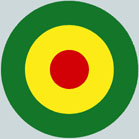 |
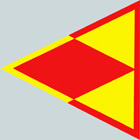 |
 |
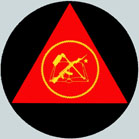 |
 |
| Kyrghystan |
Mali |
Macédoine |
Mongolie |
Mozambique |
Népal |
 |
 |
 |
 |
 |
 |
| Nigéria |
Ouganda |
Ouzbézistan |
Rwanda |
Serbie |
Sierra Leone |
 |
 |
 |
 |
.jpg) |
 |
| Soudan |
Syrie |
Tadjikistan |
Turkmenistan |
Vénézuela |
Yemen |
 |
| Zimbabwe |
The dragonfly of the death
|
|
Michäel Leontyevich Mil
1909 1970 |
Introduction This powerful super helicopter was born in the engineering and design department from Michael Leontyevich Mil in the beginning of the Sixties.
It is entered in service the Seventies. At the time of its service entrance this helicopter slices clearly with the techniques of use of Western helicopters.
Indeed for the Western army the helicopter is only one machine of transport or rescue. However for in the Soviet soviet strategy the helicopter is a true Tank flying as well as a flying Personnal carriere
The helicopter must transport troops in full safety above the enemy territory, occupy the ground and figth against enemies forces which attack it.
The MI 24 was built for that. The conditions of the contrat envisages a helicopter equipped with load offensive weapons and to be able also to transport in enemy territory a section of eight soldiers full armed
It must also be able to fight against the enemy tanks, planes, enemies helicopters and to provide an escort to the helicopters of transport.
If this helicopter were extrapolated from MI 8, it is however a new helicopter new bus because he does not have almost any common element with its predecessor
History The idea to build a helicopter of this type shaped in the middle of the Sixties
12 prototype were built. First flight of this machine take place on the September 19th, 1969. The NATO had wind of the presence of this new machine in 1972 but the first pics were published in 1974 when a helicopter is photographed in the former East Germany.(GDR)
It was at once baptized Hind whereas it was known in Soviet block on the name of A10
The motorization being ensured by 2 turbomoteursTV3s.
The fuselage has a new design. With before a cockpit in tandem which can accomodate the 4 crew men pilot and copilot with the back navigator and observer with the front one.
The fuselage tail section is occupied by a cabin which has a vast door of access which opens into two upwards and downwards
For the small history this helicopter with a female crew beat the world record speed reaching the speed of 368 4 km/h.
Although heavier than Sea King it has a mobility worthy of a hunter.
In 1977 a new version appeared with an important modification of the nose of the apparatus. It is the version which we currently know. This modification involves a new adjustment of the cockpit with only two people the pilot in the back and the operator with the front one.
The fuselage has from now on a sliding door.
MI Hind 24 has under the cockpit, of a turret having a chain -gun (4x 12.7 mm) .
The silhouette of the Mi Hind 24 is now on fixed
Only minor modifications will be brought It was used operationally in Chad ,Sri Lanka Angola ,Afghanistan, Chetchnia,Iraq, Iran
It had even the privilege to cut down Phantom II with a missile AT 6 Spiral
Versions of the Mi 24
M124 (Izdelei 240 Hind B) Prototype and helicopters of pre series Using to wing the records speed and a specimen was used to test a rear rotor “fenestron” like in the French Gazelle Pilot and copilot seat in tandem
Mi24 A (Izdelie 245 Hind A ) Similar with the Prototype with gun Afanasyev A12.7 (TKB481); The door of the pilot is replaced by a sliding door It can shoot AT missiles AT2 Swatter (9M17M) with manual guidance
Mi 24 Hind C School Helicopter not armed
Mi 24 F (Izdelie 245 M Hind A) Test for new equipment .Production 240 the production ended in 1974
Mi24B (Izdelie 241 Hind A) Helicopter testing a new panoply of armament : new machine-gun Yakoushev/Borzov (YakB TKB-063 or 9A6624)
Mi24 D(Izdelie 246 Hind D) Interim Model between Mi 24 B and Mid 24 V produce in 1971 Production 350 in Rostov and Arsenyev factories. It is motorized by engine TV3-117 but the major modification is the redrawn cockpit
It is armed with missiles Falanga P
Mi 24DU (Izdelie 249) Training version not armed
Mi24 PTR Version developed for the missile Shturm V
Mi24V (Izdelie 242 Hind E) Classical Version of the Hind
It is motorized with engines TV3-117V of Mi24 D modified and more powerful Its armament is composed of 8 missiles anti-tank AT6 Spiral (9M114)
Production between Mach 1976 and the end 1981 1000 helicopters
Mi 24V (Mi24VD D for Dorobotanni alias Terminator) Prototype developed following the experiment in Afghanistan
This model fruit of the experiments of the ground modify has a reinforced armament (machine-gun 12.7 NSVT-12.7Utyos) and an increased protection
The gun is retractable in flight But the landing chassis is always fixed
The project was abandoned in 1986
Mi 24VM/Mi24PM/Mi 35 M (Hind E) Series of prototype to test new engines of the new means of navigations and armament
Arsenal Mi24V Upgrade Modernisation Ukrainian carried out by the arsenal of Kiev at base partly of French technology
M124BP (Izdelie 258) final Version of Mi24 V armed with 2 guns GSh-23L 23 mm fed has 450 blows Service entrance in 1989 but quickly withdrawn following a problem on the ammunition
Mi24VU (Hind E) TrainingVersion built for Russia and export
Mi 24 P (Izdelie 243Hind F) Version developed in of 1974 Production 620 were built between 1981 and 1989 the term P was given to him in reference has Pushka which wants to say gun ( 2 guns GSh-23L 23 mm placed before right of the fuselage )
Mi 24 RKhR or R (Izdelie 2462 Hind G1) Recce NBC Helicopter which must replaces the Semi 8VD.
RKhR = dlya Radiatseeonno-Khimeccheskoi Razvedki (NBC reconnaissance).il was identified in Tchernobyl at the time of the catastroph in April of 1986 Prodcution 152 between 1982 and 1989.
Mi24 RA (Izdelie 2462 or 2463 Hind G1 MOD.) Conversions from Mid 24 V
Mi-24K (korrektirovchik: corrector) (Izdelie 201 ` Hind-G2) Helicopter in service with artillery (fire observation ) 163 machines were built
Mi24 BMT (Izdelie 248) Version developed in 1973 for the mines war
Mi24 VN (Mi35O hind E) Helicopter used temporary for Night attacks Based upon Mi24 V or P
Mi24 PN new version under test in 2000 with new fire control systems
Mi-24PS (Patrul' nospasatelny: SAR) Version patrols Reco
Mi25 or Mi35 D export version export of Mi24 D for Afghanistan Angola Cuba India Peru
Mi35 or Mi 25V export version for Mi24 V
Mi35D Version export with components of Kamov Ka 50
Mi35P Version export Mi24P
Mi35M Nigth version attacks of Mi24/35
ATE Super Hind Propose by African Southern firm Denel/Kentron development in 1998 for Algeria
Tamam Mi 24 HMOSP (Mission 24) Development for the Israelis for the account of
Mi Hind 24 Hollywood French Puma modified for the Rambo film

Approximately 5200 machines were built in Arsenyev and Rostov including 1000 built for export
Principal users
Afghanistan 36 1979
Algérie 38 1978
Angola 36 1983
Arménie 12 1999
Azerbaidjan 4 2000
Belarussie 76 2000
Bulgarie 38 1979
Burkina Faso 2 2005
Cambdoge 3 2000
Chypre 11 2005
Congo ? 1997
Congo RDC 22 2005 Corée du Nord ? 1985
Cote d'Ivoire 2 2002 mercenaires
Croatie 15 1993
Cuba 20 1982
Erythrée 4 1996
Ethiopie 40 1980
France 3 saisis au Tchad GB 1 ex Lybie
Géorgie 4 2005
RFA 39 1990
Hongrie 30 1978
Inde 50 1984
Irak 20 ?
Iran 10 ex irakiens
Kazakhstan 42 2005
Kyrghyzstan ??
Libye 65 1975
Mali 1 2207
Macédoine 8 2001
Mongolie 11 2007
Mozambique 4 2007
Nepal 2 2003
Nigéria 12 2000
Ouganda 3 2004
Ouzbekistan 42 2005
Pérou 12 1980
Pologne 41 1978
Russie + de 700
Rwanda 2 1997
Serbie 2 2007
Sierra Leone 1 1999
Sri Lanka 13 1995Soudan 20 2005
Slovaquie 16 1993
Syrue 36 2000
Tadjikistan 5 2000
Turkmenistan 10 2005Tchéquie 50 1978
Ukraine 280
USA ex RDA ex Libye + Irak
Venezuela 10 2007
Vietnam 30 1980u
Yemen 15 2005
Zimbabwe 6 2000
Data Specifications
Crew 2 + 8 in cabin
Weight 8.5T
Length 17.51 m
Width with rotor 21m
Height 4.4m
Motorisation 2 Klimov TV3-117MT
Gasoline intern tanks 2130 liters + 2000 liters in 4 external tanks
Speed 320 Kms/h max 270 Kms /h
Autonomie cruising has maximum loading 160kms 224 Kms with 2 external tanks 288kms with 4 Variable
Armement according to versions
Mi Hind A 1x12.7 4 baskets of rockets UV 32-57 4 missiles AT2 Swatter
Mi Hind D 1x12.7 Turret with 4 guns under the station of piloting 4 baskets of rockets UV 32-57 4 missilesAT2 Swatter
Mi Hind E 1x12.7 Turret with 4 guns under the cockpit 4 baskets of rockets UV 32-57 4 Spiral missiles AT6
Mi Hind F 1 a gun bitube de23 mm on the side of the cockpit 4 baskets of rockets UV 32-57 4 Spiral missiles AT6
Thank to Pierre for the Pics of this Polish Hind Others Walk Arounds 1 2
Users of the Mi Hind 24
France UK and USa used captured Hind
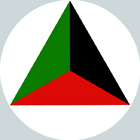 |
 |
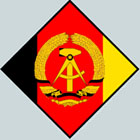 |
 |
 |
 |
| Afghanistan |
Algeria |
Former GDR |
Germany |
Angola |
Bulgary (Until 1992 ) |
 |
l |
 |
.jpg) |
.jpg) |
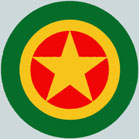 |
| Congo |
Noth Korea |
Croatia |
Cuba |
USA |
Ethiopia |
.jpg) |
 |
 |
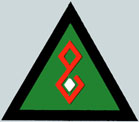 |
 |
.jpg) |
| France |
Hungary (Until 1992 ) |
India |
Irak |
Libya(since 1973) |
Perou |
.jpg) |
.jpg) |
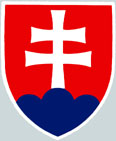 |
 |
 |
.jpg) |
| Poland |
UK |
Slovakia |
Sri Lanka |
Ukrainia |
Russia |
 |
 |
 |
 |
 |
 |
| Armenie |
Azebadjian |
Belarus |
Burkina Faso |
Cambogia |
Cyprus |
 |
 |
 |
 |
 |
 |
| Ivory Coast |
Congo (Republic of) |
Erythrea |
Georgia |
Iran |
Kazahstan |
 |
 |
 |
 |
 |
 |
| Kyrghystan |
Mali |
Macedonia |
Mongolia |
Mozambica |
Nepal |
 |
 |
 |
 |
 |
 |
| Nigeria |
Ouganda |
Ouzbekistan |
Rwanda |
Serbia |
Sierra Leone |
 |
 |
|






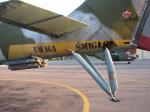
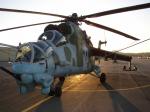
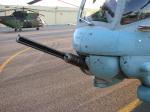
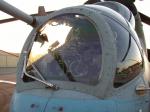
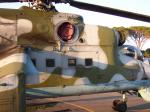
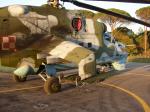
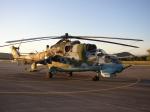
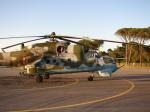
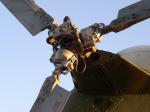
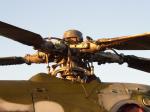
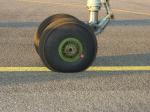
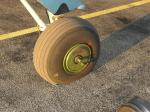
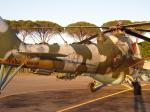
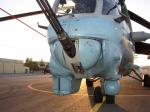
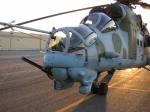
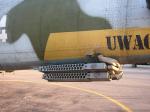
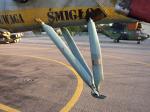
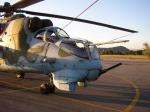
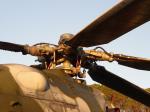
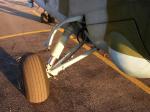
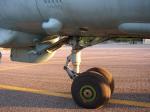
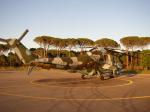









.jpg)
.jpg)

.jpg)




.jpg)
.jpg)
.jpg)



.jpg)






























.jpg)

